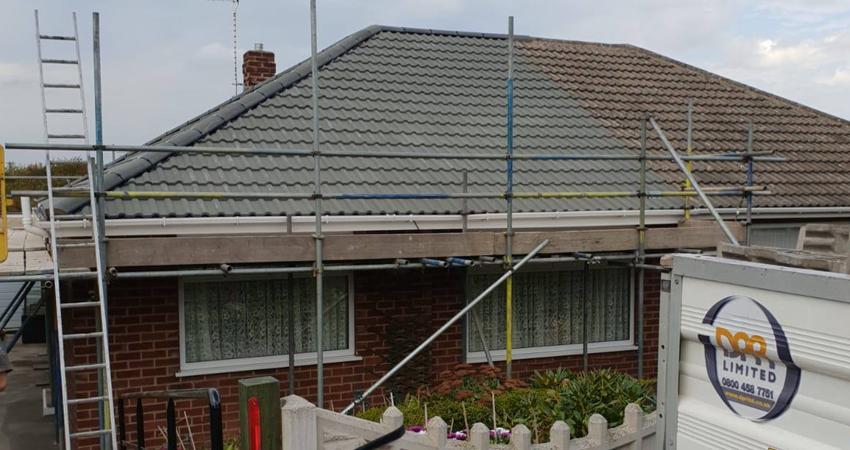When it comes to shared properties, such as townhouses or condominiums, the responsibility of maintaining and replacing the roof often falls on multiple owners. Replacing a shared roof requires careful planning, coordination, and communication among all parties involved. In this article, we will explore the key considerations for replacing a shared roof, ensuring a smooth process and successful outcome. Whether you are a homeowner or part of a homeowners’ association, read on to gain valuable insights into navigating the process of replacing a shared roof.

Assessing the Need for Roof Replacement
Before embarking on a shared roof replacement project, it is crucial to determine the need for a new roof. Conduct a thorough inspection to assess the condition of the existing roof. Look for signs of damage, such as leaks, missing shingles, or excessive wear and tear. Engage the services of a professional roofing contractor to provide an expert assessment and recommendation.
Establishing a Joint Roof Replacement Agreement
Replacing a shared roof requires collaboration and agreement among all property owners involved. Establish a joint agreement that outlines the responsibilities, costs, and timeline for the roof replacement project. This agreement should include provisions for cost-sharing, decision-making processes, and any necessary approvals from homeowners’ associations or relevant authorities.
Hiring a Qualified Roofing Contractor
Selecting a qualified roofing contractor is essential for a successful shared roof replacement project. Look for contractors with experience in handling shared properties and a proven track record in roof replacements. Obtain multiple quotes and review their credentials, licenses, and insurance coverage. Choose a contractor with excellent references and a reputation for delivering high-quality workmanship.
Financing the Roof Replacement
One of the critical aspects of a shared roof replacement project is determining the financing arrangements. Depending on the agreement among the property owners, different financing options may be considered. These options can include a joint fund, where all owners contribute to a shared pool of funds, or individual payments based on the proportionate ownership of each unit. It is crucial to have a clear understanding of the financial obligations and agree upon a fair and equitable method of financing the project.
Communication and Coordination
Effective communication and coordination are paramount throughout the roof replacement process. Establish a communication plan among the property owners and the roofing contractor to ensure everyone is kept informed of project updates, timelines, and any unforeseen issues that may arise. Regular meetings and progress reports will help maintain transparency and address any concerns or questions promptly.
Minimizing Disruptions During the Replacement
Replacing a shared roof can be disruptive to the daily lives of the occupants. To minimize inconveniences, consider implementing the following measures:
- Temporary Relocation: Depending on the scope of the project, it may be necessary for occupants to temporarily relocate during the roof replacement. Plan for alternative accommodations and communicate the temporary relocation plan well in advance.
- Noise and Dust Mitigation: Discuss with the roofing contractor the measures they will take to minimize noise and dust during the replacement process. Request the contractor to schedule the noisiest and dustiest tasks during reasonable hours to minimize disturbances.
Completion and Post-Installation Maintenance
Once the shared roof replacement is completed, conduct a final inspection to ensure that the work has been carried out according to specifications. Verify that all warranties and guarantees are provided by the roofing contractor. Establish a maintenance plan to prolong the life of the new roof, including regular inspections, gutter cleaning, and prompt repairs as needed.
Conclusion:
Replacing a shared roof requires careful planning, collaboration, and open communication among all property owners involved. By assessing the need for replacement, establishing a joint agreement, hiring a qualified contractor, determining financing arrangements, and maintaining effective communication, the roof replacement process can be smooth and successful. Minimizing disruptions and ensuring post-installation maintenance will contribute to the longevity and performance of the new roof. Remember, engaging professional assistance and adhering to a well-organized plan will lead to a shared roof replacement that benefits all property owners involved.



Leave a Reply